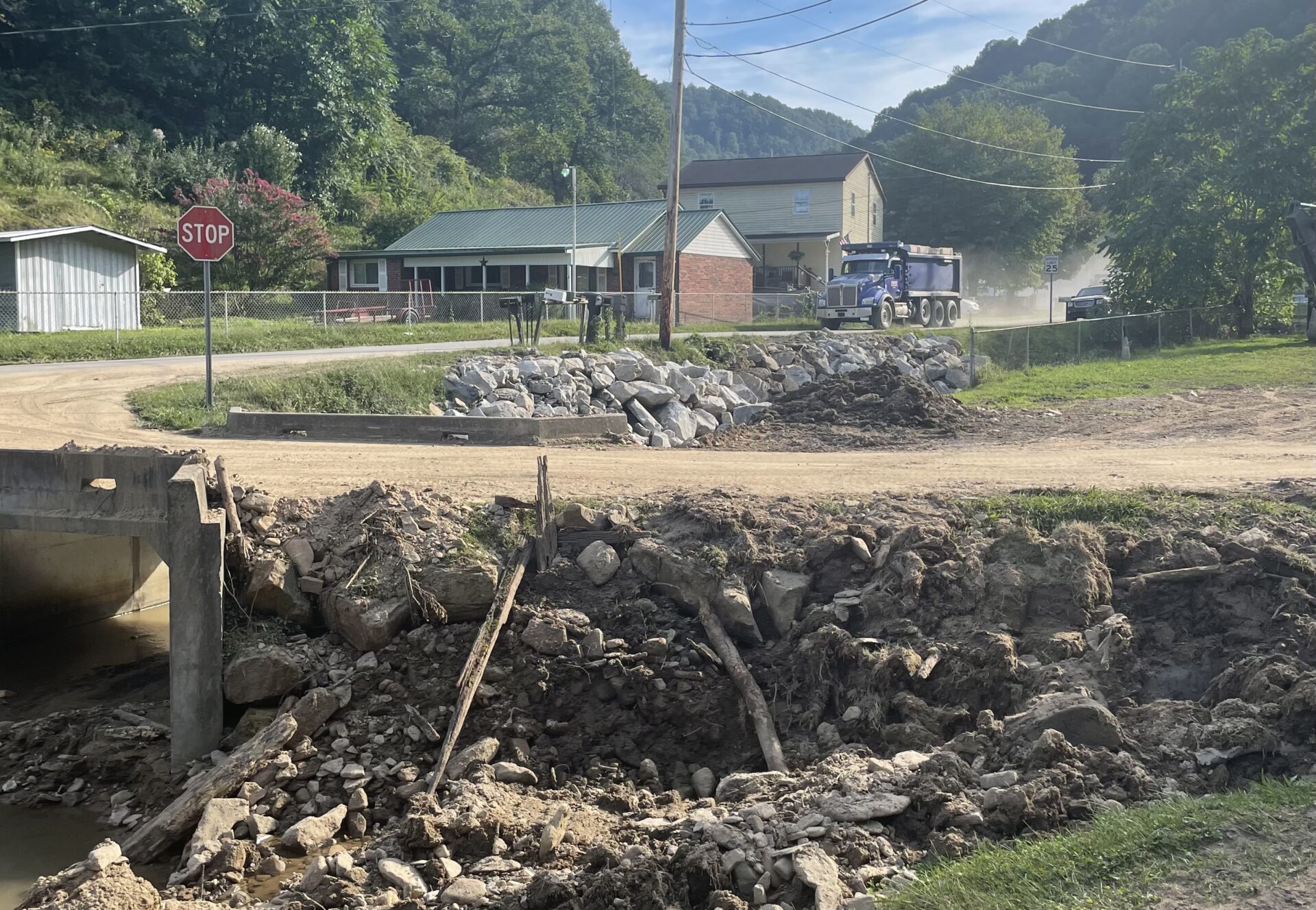Sigman said the quick response from residents, first responders, and state and local officials resulted in better outcomes for the safety of residents. The National Weather Service said it received its first call about flooding at 6:45 a.m. By 7a.m. a warning had been issued and sirens were activated.
The recovery and assessment process began Tuesday in eastern Kanawha County where floods damaged homes, vehicles, bridges, and roadways.
On Wednesday the Kanawha County Commission reported that at least 78 homes were affected, three were destroyed, and seven remain inaccessible according to a survey the commission issued. The commission expects this number to rise as more residents complete the survey, many of whom live in the areas most severely affected.
There were no fatalities from the flood. Emergency Management Director CW Sigman said that’s mostly due to residents making good choices by not attempting to cross streams.
“I know, it was a very scary time for the folks to be in houses with water rushing in back,” said Sigman. “I talked to one lady who had grandchildren on the opposite end of the road she’s on and she was just in tears because she was worried about her grandchildren. But they didn’t get out into the high water and that saves lives.”
Sigman said the quick response from residents, first responders, and state and local officials resulted in better outcomes for the safety of residents. The National Weather Service said it received its first call about flooding at 6:45 a.m. By 7a.m. a warning had been issued and sirens were activated.
The flood flashed quickly, many residents said that it rose faster than any other flood they had seen — rising feet in a matter of hours.
Fast Moving Water Is Powerful
Sigman says that many of the streams that saw the worst flooding like the Slaughter Creek watershed had steep gradient streams. The water moved quickly down into valleys where residential communities live. Sigman says that the water, sediment, and debris it brought with it caused lasting damage to the creek bed and banks.
Sigman visited one of the affected homes where he was told the homeowners had just made their first mortgage payment. The creek behind the home had eroded so severely that it had moved 10 feet closer to their home — possibly putting it at a higher flood risk for future storms.
“That kind of damage is disturbing with how much sediment came with it and how much the creek banks and the hillsides have caved in,” Sigman said.
Water Quality Affected
As water moved through the hills, it collected debris, sediments, bacteria, and chemicals. The Kanawha-Charleston Health Department has detected E. Coli in a residential water well that was tainted during Monday’s floods.
The Health Department is encouraging residents to have wells tested for free to avoid ingesting the deadly strain of bacteria.
“I hope this information gets out to residents who clearly have so much going on in their lives right now. We really don’t want an emergency room visit for a E. coli infection to be one more ordeal they have to contend with right now,” said KCHD Health Officer Dr. Steven Eshenaur.
Many of the areas where the rain fell have been heavily mined, which could also affect the quality of the water. A study published in the Journal of Hydrology said that water discharged from active or inactive coal mine sites has higher acidity and can contain heavy metals.
Insurance Payouts And FEMA Disaster Declaration For Small Communities
State and local officials are working to assess damage to homes and infrastructure. Once the process is complete, the localities will send numbers to the governor who can then request a FEMA disaster declaration.
Sigman says there are multiple qualifiers that FEMA is looking for to declare a disaster declaration. For example, the state must meet a threshold of $3 million in damage to infrastructure.
“They look at vulnerability factors. You know you live in an area that has a lot of retired citizens, people with disabilities or other vulnerability factors, FEMA will factor that in,” Sigman said.
Sigman said that FEMA is in place to help a community though the crisis but usually does not work to replace homes or rebuild infrastructure.
Local Response And Plan
The Kanawha County Commission has worked with other agencies and community members to assist flood victims. They are still accepting donations, and say they specifically need contractor grade trash bags, bleach, push brooms, and shovels. They do not accept clothing or cash donations. Supply Distribution points are at Belle Town Hall and Chesapeake Town Hall.
On Tuesday, Curbside Debris Collection will begin in Slaughters Creek, Winifrede-Fields Creek, Witcher Creek, Kelly’s Creek, and Horsemill Hollow. The Kanawha County Planning and Development Office is asking that debris be placed off Private Property, onto the road. The office also asks that residents report damage so that official recovery processes can begin.
